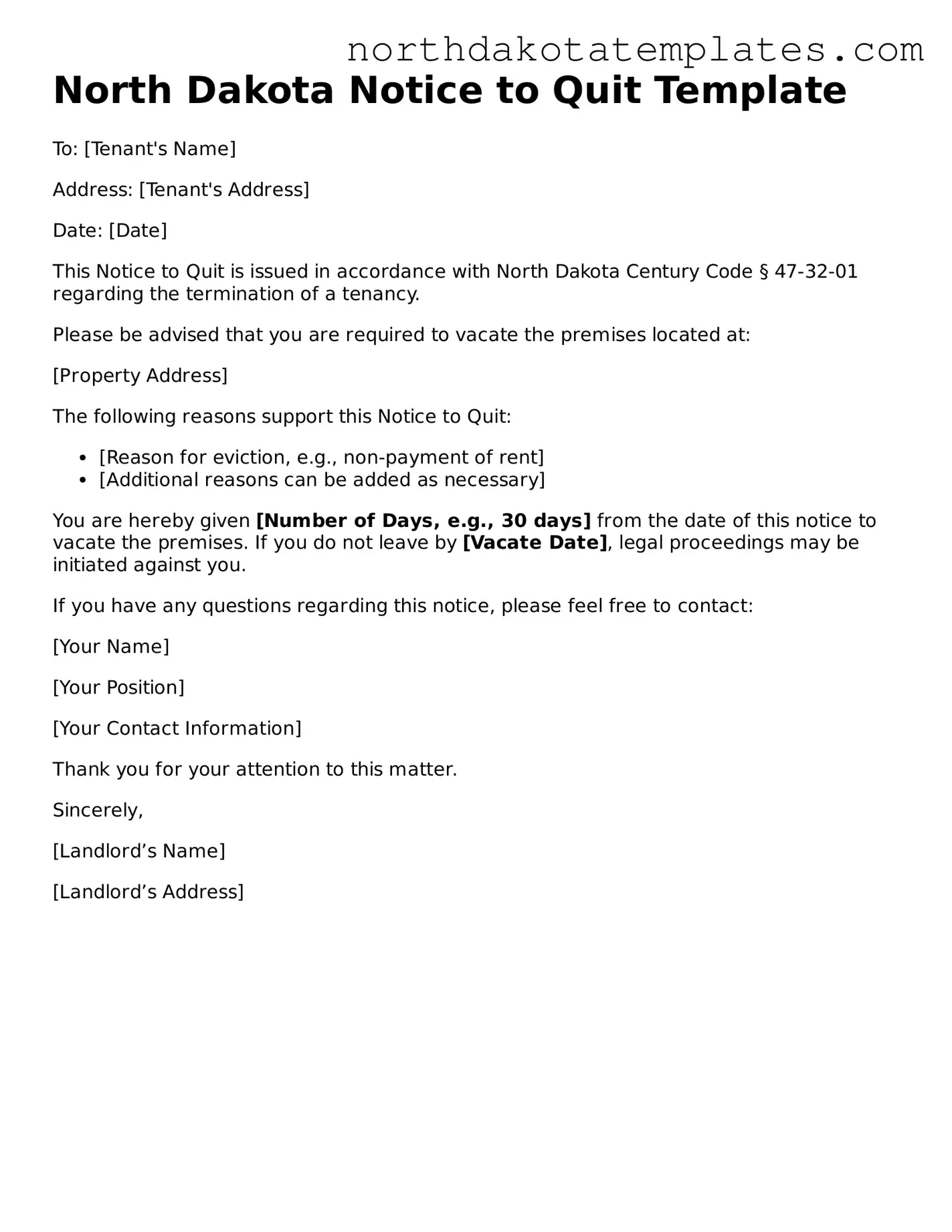What is a North Dakota Notice to Quit form?
The North Dakota Notice to Quit form is a legal document used by landlords to inform tenants that they must vacate the rental property. This notice is typically issued when a tenant has violated the terms of their lease or rental agreement, or when a landlord wishes to terminate a month-to-month tenancy. It serves as a formal communication to initiate the eviction process if necessary.
How much notice must be given in a Notice to Quit?
In North Dakota, the amount of notice required depends on the reason for the eviction. Generally, a 3-day notice is required for non-payment of rent, while a 30-day notice is needed for terminating a month-to-month tenancy. For other lease violations, landlords may provide a notice period of 14 days to allow tenants to remedy the situation.
Can a tenant contest a Notice to Quit?
Yes, tenants have the right to contest a Notice to Quit. If a tenant believes the notice is unjust or that they have not violated any lease terms, they can respond to the notice and may seek legal advice. It is advisable for tenants to document any relevant communications and evidence to support their case.
What should be included in a Notice to Quit?
A Notice to Quit should include several key elements: the date of the notice, the address of the rental property, the reason for the notice, and the specific timeframe for the tenant to vacate. It should also be signed by the landlord or their representative. Clarity in the language used can help avoid misunderstandings.
What happens if a tenant does not leave after receiving a Notice to Quit?
If a tenant does not vacate the property by the deadline specified in the Notice to Quit, the landlord may proceed with filing an eviction lawsuit in court. This legal action is known as an unlawful detainer action. Tenants will have the opportunity to present their case in court, and a judge will make the final decision.
Is a Notice to Quit the same as an eviction notice?
While a Notice to Quit is a type of eviction notice, it is not the final step in the eviction process. The Notice to Quit serves as a warning and a request for the tenant to vacate. If the tenant does not comply, the landlord must take further legal action to formally evict the tenant through the court system.
Do I need to have the Notice to Quit served in person?
No, the Notice to Quit does not necessarily need to be served in person. Landlords can deliver the notice by mail, or in some cases, by posting it on the rental property. However, it is important to follow the legal requirements for serving notices to ensure that the process is valid and enforceable.
Can a tenant request an extension after receiving a Notice to Quit?
Tenants can request an extension from their landlord after receiving a Notice to Quit. It is at the landlord's discretion to grant or deny this request. Open communication between the landlord and tenant may lead to a mutually agreeable solution, especially if the tenant is facing extenuating circumstances.
